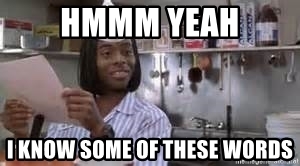¶ Introduction
Welcome to the user guides section of the Artemis wiki. These articles will serve as a way to help you understand the different concepts of Artemis and how to use them to create great looking interactive and animated profiles.
¶ Before you start
 You should realise that some parts of Artemis are not intended to be simple to understand straight away. While we try to make Artemis as easy to use as possible, it may not be very easy to fully learn.
You should realise that some parts of Artemis are not intended to be simple to understand straight away. While we try to make Artemis as easy to use as possible, it may not be very easy to fully learn.
If you've ever worked with video editing software (and especially Adobe After Effects) you will quickly find some similarities and the interface should come across as fairly familliar.
If you've never used any kind of video editing software: Don't worry! Artemis isn't as intimidating as something like an Adobe product and when you follow these guides you'll be fine .
¶ Guides
The pages below all explain a specific part of Artemis. For your convenience they have been split up into seperate topics.
If you're not sure where to start, just go from down the list from top to bottom, good luck!
¶ General
- Surface - A guide on what the surface is and how to set yours up correctly.
- Settings - A guide detailing the different settings available in Artemis.
- Sidebar - In this guide we'll teach you about the sidebar and how you can use to create and organize profiles.
- Profiles - This guide will introduce profiles and walk you through the different elements of the editor, explaining in short what everything is used for.
¶ Layers
These guides will teach you about the basics of creating profiles.
- Overview - This guide explains what layers are and what they are used for.
- Properties - This guide will explain the properties each layer has.
- Brushes - This guide explains what brushes are and how they are applied to layers.
- Effects - This guide explains what effects are and how they are applied to layers.
¶ Conditions
These guides will teach you how to create responsive layers.
- Overview - This guide explains what conditions are and what kind of conditions you can define to create layers that respond to conditions and events.
- Regular conditions - This guide will how you how you can create and combine multiple regular conditions.
- List conditions - This guide will explain special list-based conditions.
- Event conditions - This guide will explain special event-based conditions.
¶ Timeline
These guides will teach you how to create animations.
- Overview - This guide will explain how the timeline works during playback and while using the profile editor.
- Keyframes - This guide shows you what keyframes are and how you can use them to create all kinds of animations.
- Segments - This guide will explain how you can split the timeline of a layer up in separate parts for advanced usage in combination with conditions.
¶ Data bindings
Thes eguides will teach you how to create dynamic layers.
- Overview - This guide explains what data bindings are and what kind of data bindings you can define to dynamically change the properties of folders and events.
- Direct data bindings - This guide will explain how to create data bindings that directly project a data model value onto a layer property.
- Conditional data bindings - This guide will explain how to create data bindings that apply predefined values to properties based on conditions.
¶ Walkthroughs
To put all the concepts and principles explained above into practice you can find a few walkthroughs below.
- Sliding rainbow - This walkthrough will guide you to creating a sliding rainbow profile
- Key waves - This walkthrough will guide you to creating a profile that responds to key presses